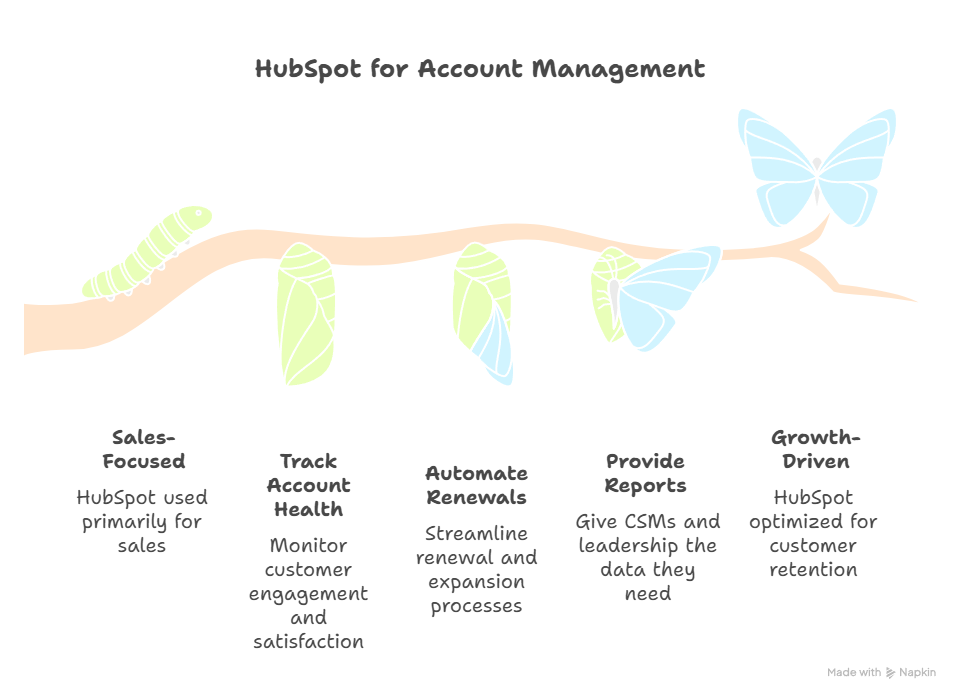

Most SaaS teams set up HubSpot for sales, then forget about what happens after the deal closes.
But the truth is this: your growth depends more on keeping and growing customers than on closing new ones.
If HubSpot isn’t set up for account management, you’ll miss renewals, lose upsells, and struggle to explain churn to your board.
This guide shows you how to use HubSpot to:

You can track accounts in two ways:
👉 Start with Companies. Move to a custom object only if you have complex account structures.
You need an early-warning system, not just churn reports after it’s too late.
Create a dropdown property called Account Health with three values:
Example: If logins drop by half in 30 days, HubSpot updates Account Health = At Risk and alerts the CSM.
This way, your team knows where to focus before churn happens.
Quarterly Business Reviews aren’t just meetings. They help you:
In HubSpot, track QBRs by:
👉 Automate reminders if a QBR hasn’t happened in the last 90 days. That keeps coverage high and churn low.
Nothing kills retention faster than unclear ownership.
Our rule of thumb:
This avoids “I thought you had it” moments that lose accounts.
Ownership also depends on company stage:
👉 Use Deal Type (New Business, Renewal, Expansion) and automation to route deals to the right owner. That way, reporting stays consistent no matter who closes the deal.

Don’t let revenue depend on memory. HubSpot can create the triggers for you:
Your team works on the accounts that matter. Leadership sees the risks in real time.
Give leaders reports they’ll actually use, not activity logs.
These dashboards replace guesswork with confidence.
Renewals and expansions are where SaaS growth really happens.
To see how renewals and expansions connect with customer journeys across marketing and sales, explore our SaaS Growth Framework using HubSpot Lifecycle Stages.
👉 Want help building this system in your HubSpot?